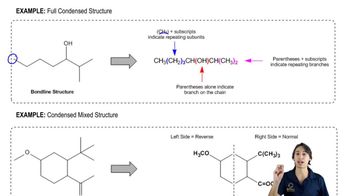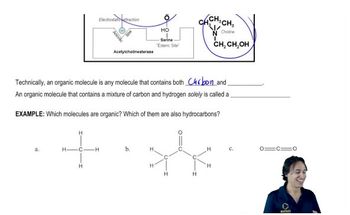How many of the following names are correct? Correct the incorrect names.
d. 1-ethyl-1-pentene
e. 5-ethylcyclohexene
f. 5-chloro-3-hexene
 Verified step by step guidance
Verified step by step guidance Verified video answer for a similar problem:
Verified video answer for a similar problem:



 1:55m
1:55mMaster How to name alkenes and alkynes with a bite sized video explanation from Johnny
Start learning